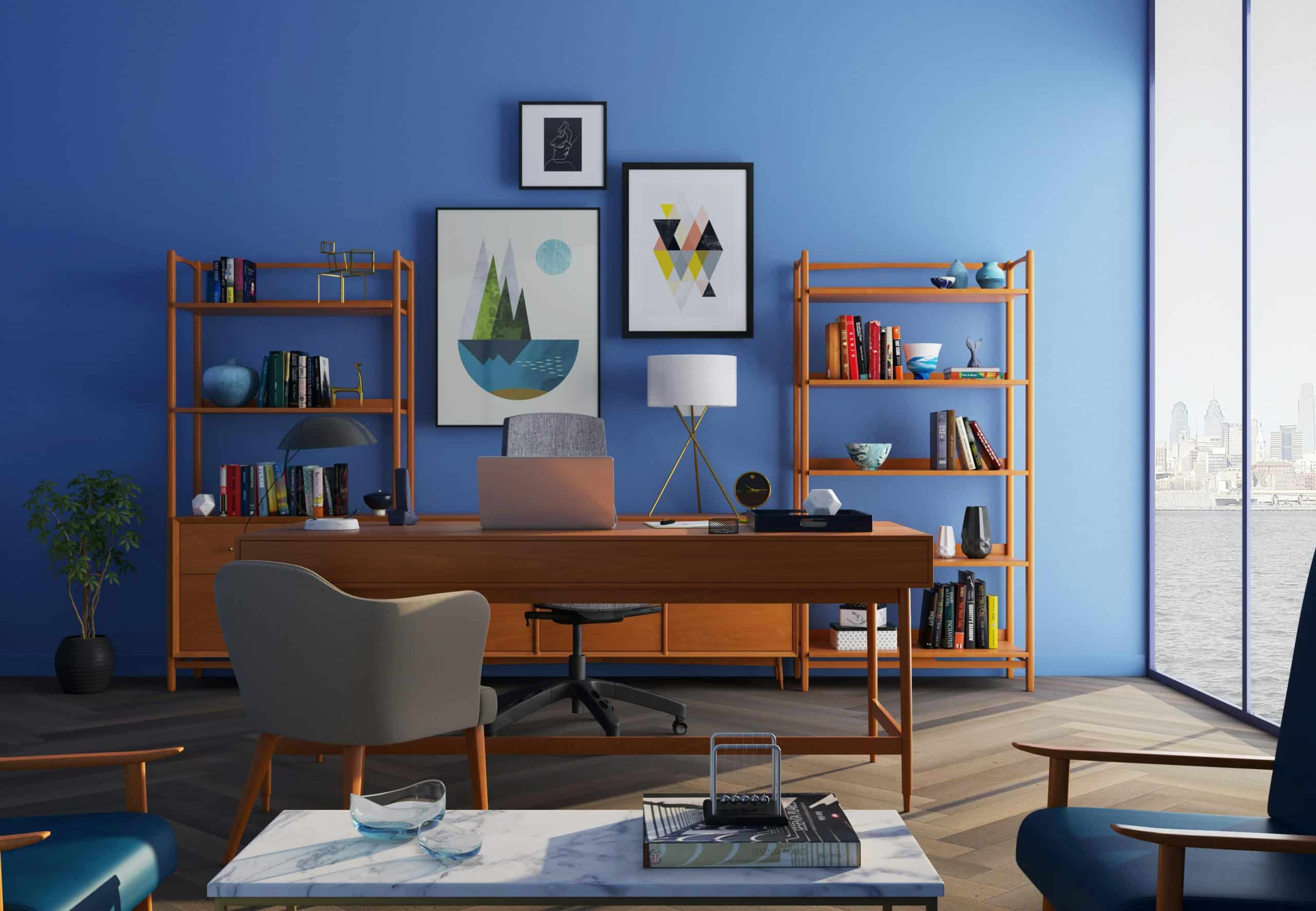How Can You Design a Home Office with a Visual Connection to the Outdoors?

In the modern era where many of us find ourselves working from home, our workspaces’ design and layout can significantly influence our productivity and well-being. Our surroundings have a profound impact on our mood, concentration, and creativity. With the rise of biophilic design, more people are seeking ways to bring elements of the natural world into their interior spaces. This article explores how you can design a home office with a visual connection to the outdoors, thereby creating an office space that not only looks good but also promotes a healthy, productive work environment.
Understanding Biophilic Design
Biophilic design is a concept within building architecture and interior design that seeks to connect building occupants more closely to nature. It incorporates natural materials, natural light, vegetation, nature views and other experiences of the natural world into the modern built environment. The term ‘biophilia’ means ‘love of nature,’ and it’s based on the idea that humans have an innate tendency to seek connections with nature and other forms of life.
In parallel : What’s the Best Way to Incorporate Energy-Efficient Appliances in a Vintage Kitchen?
In the context of home office design, biophilic design can create a workspace that not only boosts productivity but also improves mental well-being. A biophilic home office can help reduce stress, enhance creativity and clarity of thought, improve our well-being and expedite healing.
Incorporating Natural Light
One of the easiest and most effective ways to incorporate biophilic design into your home office is by maximizing natural light. Natural light not only reduces reliance on artificial lighting but also creates a more comfortable workspace. It can significantly reduce eye strain and fatigue associated with prolonged computer work.
In the same genre : What’s the Best Approach to Installing a Low-Maintenance Green Wall Indoors?
The location of your home office is critical in determining the amount of natural light it can receive. If possible, choose a space with large windows, skylights, or glass doors to allow maximum sunlight infiltration. You can also use light-reflecting materials and colors to enhance the levels of natural light.
Creating a View to Nature
Another significant element of biophilic design is the inclusion of views to nature. This can be achieved by orienting your desk and workspace towards windows or glass doors that overlook a garden, trees, or even a simple bird feeder. Even a small window with a view of nature can have a relaxing and restorative impact on your mood.
If it’s not possible to have a view of nature from your workspace, you can create a similar effect by utilizing nature-inspired wallpapers or large-scale photographic prints of natural landscapes. Alternatively, consider the use of digital technology to project nature scenes onto a wall or screen.
Adding Indoor Plants and Using Natural Materials
Indoor plants not only add a touch of nature to your workspace, but they also improve air quality by absorbing toxins and emitting oxygen. They also have a calming effect and can reduce stress levels.
To maintain a natural feel in your office space, consider using furniture made of natural materials like wood, bamboo, or rattan. You could also incorporate natural elements into your office accessories; for instance, use stone paperweights or decorate your desk with seashells.
Designing an Outdoor Workspace
If you have the luxury of space and good weather, why not consider designing an outdoor workspace? This could be as simple as a comfortable chair and a sturdy table in the garden, or as elaborate as a fully-equipped outdoor office shed.
An outdoor workspace allows you to immerse yourself fully in nature while working. The fresh air and different surroundings can stimulate creativity and break the monotony of indoor work. Remember, though, to account for weather elements, ensure there’s adequate shading, and have a plan for securing your equipment when it’s not in use.
In summary, creating a home office with a visual connection to the outdoors is not just about aesthetics. It’s about embracing a biophilic approach to design that enhances our connection with the natural world, promoting productivity, creativity, and overall well-being. Whether through maximizing natural light, creating nature views, using natural materials, incorporating indoor plants, or even designing an outdoor workspace, there are numerous ways to achieve this. And remember, even small changes can make a big difference.
Emphasizing Visual Connection through Layout and Décor
The layout and décor of your home office play a crucial role in creating a visual connection with nature. For instance, if your workspace overlooks a garden, consider placing your desk close to the window to maximize the view. Positioning your work area to face the window aids in providing a constant connection with the outdoors, improving your mood and productivity.
Colour schemes inspired by nature can also help reinforce the biophilic design. Shades of green, brown, and blue can evoke the same calming effects as being outdoors. Wallpapers or murals featuring forest landscapes, ocean waves, or scenic views can create an illusion of depth and bring nature indoors.
Mirrors, too, can be a useful tool. If positioned correctly, they can reflect the outdoor scenery into your workspace, creating an even stronger visual connection.
Image credit can also be given to nature-inspired artwork. Pictures, sculptures, and other forms of art that depict nature can create a sense of the outdoors within your office. You can even display nature-inspired textiles or rugs that feature botanical or animal prints.
In the same vein, it becomes crucial to minimize elements that disrupt the visual connection to the outdoors. Clutter can be a significant distraction and can obstruct views of nature. Hence, maintaining an uncluttered, clean workspace helps to keep the focus on the natural elements within the space.
Integrating Outdoor Living Spaces
Your home office need not be confined to the interiors. If you have an outdoor living space, like a patio, deck, or gazebo, you can use it as a part-time workspace. This is an especially good option for those who enjoy fresh air and don’t mind working in different locations around the home.
An outdoor living space can be as simple or as elaborate as you like. For instance, a balcony with a small table and chair can suffice. If you have a larger area, you could potentially set up a complete garden office with a desk, chairs, and even storage for your office equipment.
For these outdoor spaces, it’s crucial to consider the practical aspects. Ensure your furniture is weather-resistant and that you have access to power outlets if needed. Also, remember to provide adequate shading so that your workspace is comfortable even during the warmer months.
Integrating outdoor living spaces into your work routine can provide both a change of scenery and an additional boost to productivity. Switching between indoor and outdoor work environments can break up the day and make work more enjoyable. Plus, being closer to nature can help to reset our brains, reducing stress and allowing us to focus better on our tasks.
Wrapping Up: Designing a Home Office with a Visual Connection to the Outdoors
In conclusion, designing a home office with a visual connection to the outdoors is not an unreachable feat. Whether through the strategic use of natural light, the inclusion of nature views, the incorporation of indoor plants, the use of natural materials, or the integration of outdoor spaces, the possibilities are endless.
Remember, the key to successful biophilic interior design lies in creating a living space that feels like an extension of the outdoors. It’s about bringing the calming, rejuvenating power of nature into your workspace. And it’s not just about aesthetics – it’s about creating a workspace that boosts your productivity, sparks your creativity, and enhances your overall well-being.
So, don’t be afraid to experiment with different ideas, and remember that even small changes can make a significant difference. After all, it’s not just about designing a home office; it’s about creating a healthier, happier, and more productive work environment.
